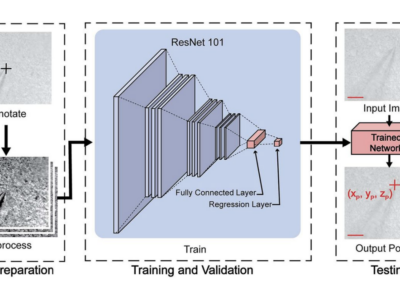Craniobot
; Suhasa Kodandaramaiah from the University of Minnesota, Twin Cities, has shared the following about Craniobot, a computer numerical controlled robot for cranial microsurgeries.
The palette of tools available for neuroscientists to measure and manipulate the brain during behavioral experiments has greatly expanded in the previous decade. In many cases, using these tools requires removing sections of the skull to access the brain. The procedure to remove the sub-millimeter thick mouse skull precisely without damaging the underlying brain can be technically challenging and often takes significant skill and practice. This presents a potential obstacle for neuroscience labs wishing to adopt these technologies in their research. To overcome this challenge, a team at the University of Minnesota led by Mathew Rynes and Leila Ghanbari (equal contribution) created the ‘Craniobot,’ a cranial microsurgery platform that combines automated skull surface profiling with a computer numerical controlled (CNC) milling machine to perform a variety of cranial microsurgical procedures on mice. The Craniobot can be built from off-the-shelf components for a little over $1000 and the team has demonstrated its capability to perform small to large craniotomies, skull thinning procedures and for drilling pilot holes for installing bone anchor screws.
This research tool was created by your colleagues. Please acknowledge the Principal Investigator, cite the article in which the tool was described, and include an RRID in the Materials and Methods of your future publications. Project portal RRID:SCR_021573; Software RRID:SCR_021609
Read the paper!
Check out projects similar to this!









